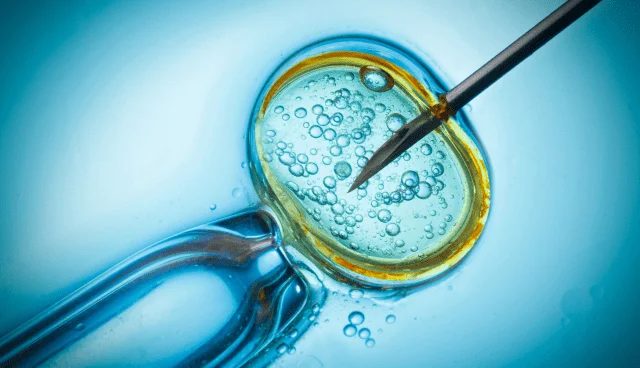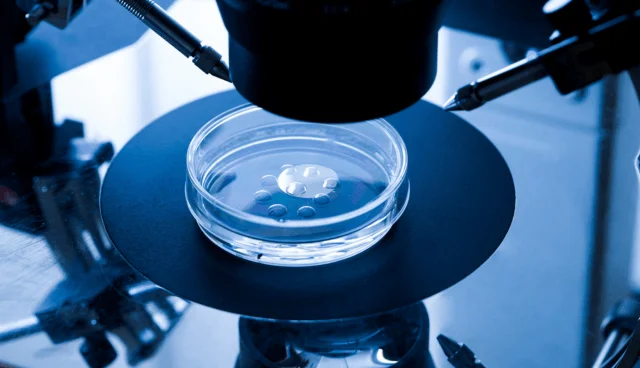
What is In Vitro Fertilization (IVF)
In today’s world, medical advancements have opened up a plethora of options for couples struggling with infertility. One such breakthrough is In Vitro Fertilization, commonly referred to as IVF. This assisted reproductive technology has given hope to countless individuals who dream of having a family but face challenges in conceiving naturally. In this comprehensive guide, we will explore the intricacies of what is in vitro fertilization (IVF), the IVF process step by step, and its various aspects, from embryo transfer to IVF pregnancy.
What is In Vitro Fertilization (IVF)?
In Vitro Fertilization, often abbreviated as IVF, is a medical procedure that allows couples who face infertility issues to have a child. IVF involves combining an egg and sperm outside of the body in a laboratory setting to create an embryo, which is then implanted in the woman’s uterus for pregnancy. This groundbreaking technology has revolutionized the field of reproductive medicine, providing new hope and possibilities for prospective parents.
Understanding the IVF Process Step by Step
1. Initial Consultation and Evaluation
The journey of IVF begins with an initial consultation and thorough evaluation by a reproductive specialist or fertility doctor. During this phase, medical history, lifestyle factors, and previous attempts at conception are discussed. Various diagnostic tests are conducted to identify the underlying causes of infertility in both partners.
2. Ovulation Induction
Once the evaluation is complete, the woman typically undergoes ovarian stimulation, also known as ovulation induction. This step involves the administration of hormones to stimulate the ovaries to produce multiple eggs. Monitoring through blood tests and ultrasounds is essential to ensure the ovaries respond appropriately to the medication.
3. Egg Retrieval
When the follicles containing the eggs are deemed mature, a minor surgical procedure called egg retrieval or follicular aspiration is performed. This typically takes place under sedation or anesthesia to minimize discomfort. The mature eggs are removed from the ovaries using a tiny needle. The collected eggs are immediately transferred to the laboratory for fertilization.
4. Sperm Collection and Preparation
Sperm is simultaneously obtained from either the male spouse or a sperm donor. The sperm sample undergoes processing to select the healthiest and most active sperm for fertilization. This process ensures that the most viable sperm are used to maximize the chances of successful fertilization.
5. Fertilization
The prepared sperm and recovered eggs are mixed together in the lab to speed up fertilisation. This can be achieved through conventional insemination, where sperm is introduced to the eggs, or through intracytoplasmic sperm injection (ICSI), where a single sperm is injected directly into each mature egg. Both methods aim to create embryos that will be transferred to the uterus.
6. Embryo Development
After fertilization, the embryos are closely monitored as they develop and grow in the laboratory for several days. The embryologist assesses their quality and selects the healthiest embryos for transfer. In some cases, embryos may undergo pre-implantation genetic testing (PGT) to screen for genetic abnormalities.
7. Embryo Transfer
An essential phase in the IVF procedure is embryo transfer. It typically occurs on day 3 or day 5 after fertilization, depending on the clinic’s protocol and the embryo’s development. A tiny catheter is used to carefully insert the chosen embryos into the woman’s uterus. There is no need for anaesthesia because this treatment is rather painless.
8. Luteal Phase Support
Following embryo transfer, the woman is given hormonal medications to support the luteal phase of her menstrual cycle. These medications help prepare the uterine lining for implantation and support the early stages of pregnancy.
9. Pregnancy Test
About 10 to 14 days after embryo transfer, a blood test is performed to determine whether pregnancy has occurred. A positive result indicates the presence of the pregnancy hormone hCG, and further monitoring will be scheduled to confirm the viability of the pregnancy.

What is IVF Pregnancy?
An IVF pregnancy occurs when a woman successfully conceives and carries a pregnancy to term as a result of the in vitro fertilization process. IVF pregnancies are similar to natural pregnancies in many ways, and the experience of pregnancy and childbirth is much the same. However, there may be some unique considerations for couples who have undergone IVF treatment.
One common concern for IVF pregnancies is the risk of multiple pregnancies, as multiple embryos are often transferred to increase the chances of success. In some cases, this may result in twins, triplets, or more. It’s important for healthcare providers to monitor the pregnancy carefully to ensure the health and well-being of both the mother and the developing babies.
Another aspect of IVF pregnancy to consider is emotional and psychological support. The journey through infertility and IVF treatment can be emotionally challenging, and the support of healthcare professionals, counselors, and support groups can be invaluable during this time.
Advantages of In Vitro Fertilization (IVF)
IVF offers several advantages to couples struggling with infertility:
1. High Success Rates
IVF has a higher success rate compared to other fertility treatments. The ability to select the healthiest embryos for transfer increases the likelihood of pregnancy.
2. Addressing Various Causes of Infertility
IVF can be used to address a wide range of infertility issues, including blocked fallopian tubes, male factor infertility, endometriosis, and unexplained infertility.
3. Genetic Testing
PGT can be performed on embryos to screen for genetic abnormalities, reducing the risk of passing on hereditary conditions to the child.
4. Flexibility
IVF offers flexibility in terms of the timing of conception. Couples can choose when to undergo treatment, allowing them to plan around work and personal commitments.
Considerations and Risks
While IVF is a highly effective fertility treatment, it’s essential to consider the following aspects and potential risks:
1. Emotional and Psychological Stress
Treatment for infertility with IVF can have a considerable emotional and psychological cost. Many couples experience stress, anxiety, and depression during the process. It might be helpful to look for support from mental health specialists or support groups.
2. Multiple Pregnancies
As mentioned earlier, IVF increases the likelihood of multiple pregnancies. While this can be a joyous outcome, it also carries a higher risk of complications and preterm birth.
3. Financial Costs
IVF treatment can be expensive, and not all insurance plans cover the full cost. Couples should be prepared for the financial aspects of treatment and explore available financial assistance options.
4. Not Guaranteed
The success of IVF does not ensure a pregnancy. Success rates vary depending on individual circumstances, and multiple treatment cycles may be needed.
Conclusion
In vitro fertilization (IVF) is a groundbreaking medical procedure that has brought hope to countless couples struggling with infertility. The IVF process, from initial evaluation to embryo transfer, is a carefully orchestrated series of steps designed to maximize the chances of pregnancy. IVF pregnancies are similar to natural pregnancies, but they may involve unique considerations and support needs.
